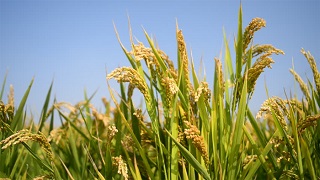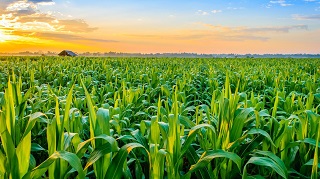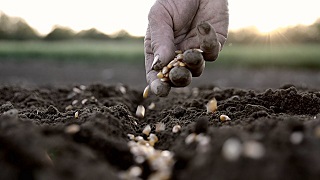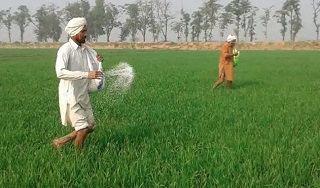Important topics covered in Crop Production and Management chapter in class 8:
- Introduction to crop production
- Type of crops
- Agriculture
- Various agricultural practices
- Crop production
- Irrigation
- Crop Protection
- Harvesting and Threshing
- Storage
- Animal husbandry
Introduction to crop production:
- Every living organism on this earth needs food to perform various life processes to keep themselves alive.
- Autotrophs (plants) prepare their own food whereas heterotrophs (animals) depend on autotrophs or other heterotrophs for food.
- We require regular production, distribution of food, and proper management to ensure food for such a large population on this earth.
Crops:

- When plants of the same kind are grown and cultivated at one place on a large scale to obtain food, clothing and other useful products is said to be crop.
- Different crops are:
|
Crops category |
Examples |
|
Cereal crops |
Paddy, wheat, maize |
|
Oil seeds |
Mustard, sunflower, groundnut |
|
Fruits |
Mango, apple, banana |
|
Pulses |
Pea, gram, bean |
|
Vegetables |
Cabbage, spinach, cauliflower |
Types of crops
There are many types of crops based on different types of parameters. Some of the parameters are listed below. More we will read in next section of crop production and management.
Seasonal Crops
On the basis of season of cultivation crops are of two types:
Kharif crops:

- Those crops which are grown during monsoon are said to be kharif crops.
- This time period is from June to September (in rainy season).
- Maize, cotton crops, millets are some example of kharif crops.
- At the beginning of the monsoon season, farmers sow these seeds.
- At the end of monsoon, these crops get matured thus, gets harvested.
- Paddy, groundnut, maize, cotton, are some examples of kharif crops.
Rabi crops:

- Those crops which are grown during winter season are said to be Rabi crops.
- This time period is from October to March
- At many places, vegetables and pulses are also grown during summer.
- Wheat, mustard, pea, gram, and linseed are some examples of Rabi crops.
Based on life span:
On the basis of lifespan of crops, they are divided into three types. They are;
Annuals:
- Their life cycle is completed in one year or a complete season.
- Wheat and pea are some examples of annual crops.
Biennials:
- Those crops which complete its cycle in two years or two seasons are said to be biennials.
- Carrot and radish are examples of biennials.
Perennials:
- Those crops which take several years to complete its cycle are said to be perennials.
- Pine and ginger are some examples of perennials.
Agriculture:

- The branch of biology which deals with cultivating the soil, production of crops and rearing of animals is called agriculture.
- Early humans ate edible parts of the plants.
- They learnt and grow and started agricultural practices to live a settled life.
Agricultural practices:
- Every activity performed by farmer for the cultivation of crops is said to be agricultural practices.
- In cultivation, their farmers need a different type of tools to perform various activities. We call these tools as agricultural implements.
Various agricultural implements used by farmers are:

- Plough
- Seed drill
- Cultivator
- Hoe
- Motor pumps
- Containers
Different agricultural practices for crop production and management are:
- Preparation of soil
- Sowing
- Adding manure and fertilizers
- Irrigation
- Protection from weeds
- Harvesting
- Storage
Now let’s discuss in detail about each topic.
Preparation of soil:

- The most important part in the cultivation of crops is preparation of soil for sowing seeds by loosening
- Farmers prepare the soil by ploughing or tilling in which involves breaking, loosening and uprooting weeds and aerating the soil.
- Then harrowing is done to destroy germinating weeds.
- Big lumps of soil are being broken down, which is called levelling.
Importance of preparation of soil:
- The loose soil allows the roots to penetrate and breathe easily inside the soil.
- Earthworms and microbes grow easily in the loosen soil which helps in better growth of crops.
- It also enables fertilizers to mix uniformly with the soil.
- The main measure of crop production and management is the preparation of soil.
Sowing of seeds:

- The process of scattering seeds in the field for growing crop is said to be sowing.
- The seed which is to be sown must be of good quality, healthy and non-infects.
- Farmers do it by simply scattering by hand, machines such as seed drills are also used for the same.
Adding manure or fertilizers:

- Plants, to grow needs nutrient. Some nutrients are grasped from the soil. The more is supplied by adding manures or fertilizers.
- Dead and decaying vegetable matter, waste from farms, household waste, excreta of animals form manure.
- The artificial fertilizers are made from ammonia, urea and phosphates. They are nutrient specific and gets easily absorbed by plants